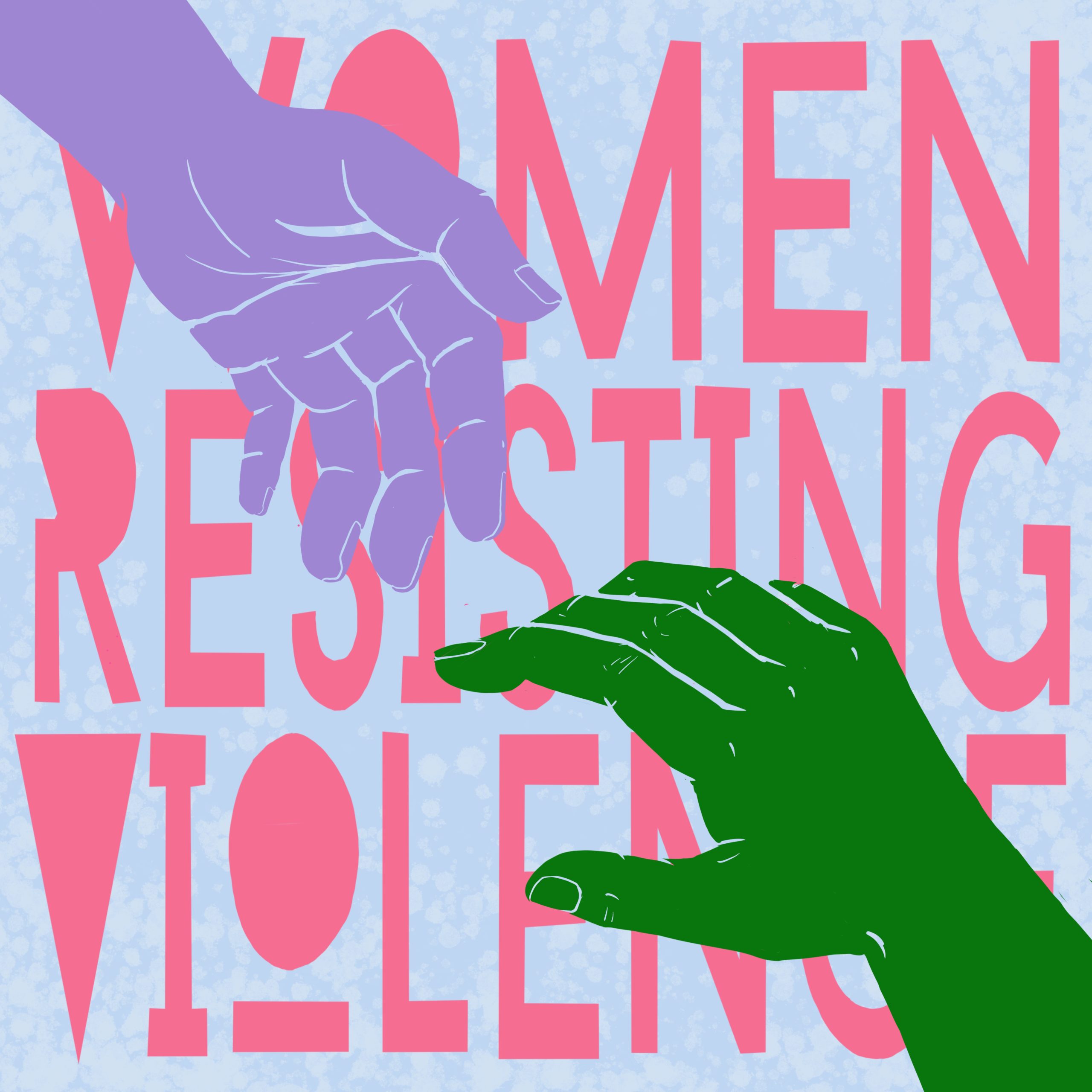This website is hosted by Latin America Bureau (LAB).

Introduction by Marilyn Thomson & Patricia Muñoz Cabrera
Latin America has one of the highest rates of gender-based violence and femicide in the world, an incidence which dramatically increased and intensified during the COVID-19 pandemic. While there is much research on the nature and causes of such violence, there is little exploration of the courageous projects designed to address it. Foregrounding the voices of those affected and those transforming their communities, in order to learn from their innovative responses, is the key aim behind our collective project Women Resisting Violence. The introduction provides a brief overview of the panorama of gendered and intersectional violence against Latin American women and girls, and the types of strategies women are putting in place to resist and mitigate it.

Bibliography
Amnesty International (2021) ‘Justice on trial: failures in criminal investigations of feminicides preceded by disappearance in the State of Mexico’, AMR 41/4556/2021, https://www.amnesty.org/en/documents/amr41/4556/2021/en
Carneiro, S. (2003) ‘Mulheres em movimento’, Estudos Avançados 17(49), pp. 117–32
Carneiro, S. et al. (2017) ‘Ennegrecer el feminismo’, in Campoalegre Septien, R. and Bidaseca, K. (eds.) Más allá del decenio de los pueblos afrodescendientes. CLACSO, pp. 109–16, https://doi.org/10.2307/j.ctv253f4nn.10
CLADEM (2020) ‘Violencia de género la otra pandemia’ Pronunciamiento, 25 November, https://cladem.org/wp-content/uploads/2020/11/Violencia-de-Genero-la-otra-pandemia-25N2020.pdf
Collins, P.H. (2009) Black feminist thought: knowledge, consciousness, and the politics of empowerment. London: Routledge.
Combahee River Collective (1977) ‘The Combahee River Collective statement’, https://www.reed.edu/cres/assets/Combahee-River-Collective,-Black-Feminist-Statement,-How-We-Get-Free—Taylor.pdf
Crenshaw, K. (1991) ‘Mapping the margins: intersectionality, identity politics, and violence against women of color’, Stanford Law Review 43, pp. 1241–99. See also her video on intersectionality at https://youtu.be/hBaIhlmM3ow
Cuellar L. and Chaher, S. (2020) ‘Being a journalist on Twitter: digital gender violence in Latin America’, https://www.dropbox.com/s/8aq93cki5raokxp/Ser%20periodista%20en%20Twitter_Cuellar-Chaher-%28SUMMARY-%20INGL%C3%89S%29.pdf?dl=0
Davidson, M. (2019) ‘Necropolítica lesbocida: uma análise sobre onecrobiopoder, soberania e violências contra lésbicas no contexto Bolsonarista’, Revista Itaca 34, https://revistas.ufrj.br/index.php/Itaca/article/view/30469
de Souza, N.M.F. and Rodrigues Selis, L.M. (2022) ‘Gender violence and feminist resistance in Latin America’, International Feminist Journal of Politics 24:1, pp. 5–15, https://doi.org/10.1080/14616742.2021.2019483
Ellsberg, M., Quintanilla, M. and Ugarte, W.J. (2022) ‘Pathways to change: three decades of feminist research and activism to end violence against women in Nicaragua’, Global Public Health, https://doi.org/10.1080/17441692.2022.2038652
Gago, V. (2020) Feminist International. London: Verso.
Gouveia, R. and Groisman, D. (2020) ‘Helena Hirata: “A questão da interseccionalidade ampliou muito o escopo das análises já feitas anteriormente”, CADTM, 2 March, https://www.cadtm.org/Helena-Hirata-A-questao-da-interseccionalidade-ampliou-muito-o-escopo-das
Hooks, b. (1990) ‘Marginality as a site of resistance’, in: Ferguson, R., Gever, M., Minh-ha, T. and West, C. (eds.) Out there: marginalization and contemporary cultures. New York: MIT Press, pp. 341–343
Htun, M. and Jensenius, F. (2022) ‘Expressive power of anti-violence legislation: changes in social norms on violence against women in Mexico’, World Politics 74(1), pp. 1–36
ISP – Instituto de Segurança Pública (2021) ‘Monitor da violência doméstica e familiar contra a mulher no período de isolamento social’, http://www.ispvisualizacao.rj.gov.br/monitor/index.html
Jimeno, M. (2010) ‘Emoções e política: A vítima e a construção de comunidades emocionais’, Mana 16(1), pp. 99–121
Kelly, L. (1998) Surviving sexual violence. Oxford: Polity Lugones, M. (2010) ‘Toward a decolonial feminism’, Hypatia 25(4), pp. 742–759
Macleod, M. and De Marinis, N. (eds.) (2018) Resisting violence: emotional communities in Latin America. Basingstoke: Palgrave Macmillan
Merino, C. (2011), interviewed by Patricia Muñoz Cabrera, 8 April, Ecuador
Mundosur (2021), Mapa Latinoamericano de feminicidios (MLF), https://mundosur.org/feminicidios
Mundosur (2020) ‘Manifiesto Latinoamericano contra las violencias de género, femicidios/ feminicidios y los trans/travesticidios’, https://mundosur.org/wp-content/uploads/2020/06/Manifiesto-Latinoamericano.pdf
Muñoz Cabrera, P. (2010) Intersecting violences: a review of feminist debates and theoretical approaches on violence against women and poverty in Latin America. London: CAWN
Nascimento, B. (2021) ‘The concept of quilombo and black cultural resistance’, in: Smith, C., Davies, A. and Gomes, B., ‘“In front of the world”: translating Beatriz Nascimento’, Antipode 53(1), pp. 279–316
Romero, D. (2018) ‘Morna Macleod y Natalia de Marinis (2018) ‘Resisting violence. Emotional communities in Latin America’ (Resistiendo a la violencia: comunidades emocionales en América Latina)’, Cultura y Representaciones Sociales 13(25), https://www.culturayrs.unam.mx/index.php/CRS/article/view/623/pdf
Segato, R.L. (2016) ‘Patriarchy from “margin to center”’, South Atlantic Quarterly 115(3), pp.615–624
Sierra, M. and Figueroa Romero, M. (2021) ‘Mujeres indígenas rompen el silencio y exigen justicia tribunal de conciencia sobre violencia de género en México’, http://dx.doi.org/10.26512/abyayala.v4i1.32380
Smit, H. and Fraser, E. (2022) ‘Latin America regional analysis’, What Works to Prevent Violence, https://ww2preventvawg.org/sites/default/files/2022-07/Ending%20VAWC%20HD%20Report%2010%20Latin%20America%20GBV%20trends%20May%202022%20FINAL.pdf
Thomson, M. (2011) Putting intersectional analysis into practice toolkit. London: CAWN
UN Women (2016) ‘Global database on violence against women’, https://evaw-global-database.unwomen.org/en/countries
UN Women (2020) ‘Intersectional feminism: what it means and why it matters’, 1 July, https://www.unwomen.org/en/news/stories/2020/6/explainer-intersectional-feminism-what-it-means-and-why-it-matters
Wallace, S. (2021) ‘Guatemala: lasting legacy of gender-based violence and state impunity. Latin America Bureau, 25 November, https://lab.org.uk/wrv-guatemala-legacy-gender-based-violence
WHO (2018) ‘Violence against women prevalence estimates, 2018 – global fact sheet’, https://www.who.int/publications/i/item/WHO-SRH-21.6
Wright, A. (2021) ‘Understanding violence against women and girls in Brazil’, Latin America Bureau, 24 September, https://lab.org.uk/understanding-violence-against-women-and-girls-in-brazil
Chapters
Click through to learn more, find extra information, and access online references:
Women Resisting Violence: Voices and Experiences from Latin America
Introduction
Chapter 2. ‘Care for those who care’: Domestic workers fight back against violence – Marilyn Thomson
Conclusions and Recommendations
Appendix: Women Resisting Violence, the multilingual podcast
Press release
For press enquiries contact wrv@lab.org.uk. You can view and download press materials here.



